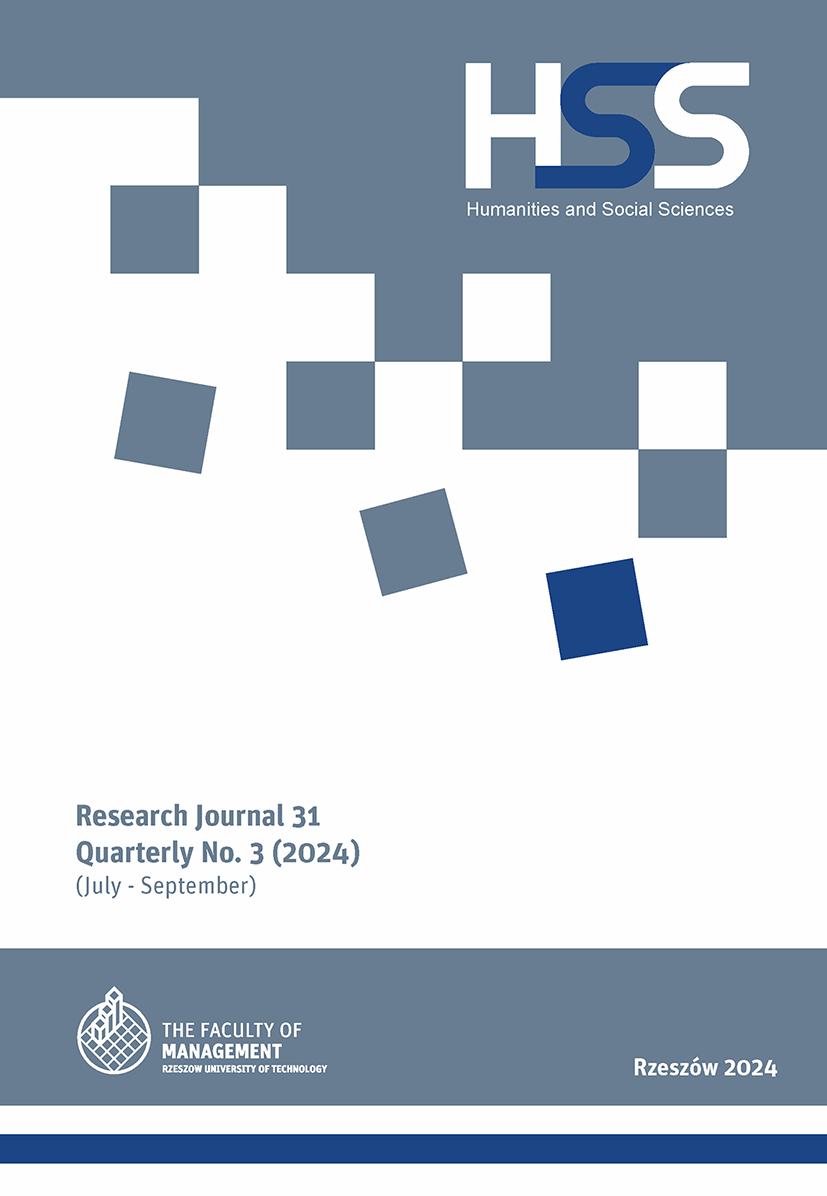Abstract
The COVID-19 epidemic caused an increase in excess deaths worldwide, most of which were in the elderly. This study aims to identify the impact of the COVID-19 epidemic on reducing the intensity of change in population aging between 2020 and 2022 in selected European countries. Time-series analysis methods with trend and seasonality are used to estimate excess deaths. The study found that of the nearly 1.5 million excess deaths observed between 2020 and 2022 in the 28 European countries analyzed, almost 93% of these were in people aged 60 years and older. The results of the study indicate that in some countries (mainly central and eastern Europe), the scale of deaths due to the COVID-19 epidemic was large enough to clearly inhibit the aging dynamics of their populations.
References
Bartoszko, J., Loeb, M. (2021). The burden of influenza in older adults: meeting the challenge. “Aging Clin Exp Res”. 33(3). DOI: 10.1007/s40520-019-01279-3.
Beaney, T., Clarke, J.M., Jain, V., Golestaneh, A.K., Lyons, G., Salman, D., Majeed, A. (2020). Excess mortality: the gold standard in measuring the impact of COVID-19 worldwide? “Journal of the Royal Society of Medicine”, 113 (9). DOI: 10.1177/0141076820956802.
Checchi, F., Roberts, L. (2005). Interpreting and using mortality data in humanitarian emergencies. “Humanitarian Practice Network”, 52.
Cronin, C.J., Evans, W.N. (2022). Nursing home quality, COVID-19 deaths, and excess mortality. “Journal of Health Economics”, Vol. 82(102592). DOI: 10.1016/j.jhealeco.2022.102592.
Czerwiński, A. (2021). Nadmierna śmiertelność w Polsce w 2020 r., “Working Paper”, nr 1. Warszawa: Polski Instytut Ekonomiczny.
Economist (2020). Why Rich Countries Are So Vulnerable to COVID-19.
Elbeddini, A., Prabaharan, T., Almasalkhi, S., Tran, C., Zhouc, Y. (2021). Barriers to conducting deprescribing in the elderly population amid the COVID-19 pandemic. “Res Social Adm Pharm”, 17(1). DOI: 10.1016j.sapharm.2020.05.025.
Eurostat (2023). Excess mortality by month (demo_mexrt). Reference Metadata in Euro SDMX Metadata Structure (ESMS).
Gardner, W., States, D., Bagley, N. (2020). The Coronavirus and the Risks to the Elderly in Long-Term Care. “J Aging Soc Policy”, 32(4–5). DOI: 10.1080/08959420.2020.1750543.
Haynes, L. (2020). Aging of the Immune System: Research Challenges to Enhance the Health Span of Older Adults. “Front Aging”, 1. DOI: 10.3389/fragi.2020.602108.
Harper. S. (2021). The Impact of the Covid-19 Pandemic on Global Population Ageing. “Journal of Population Ageing”, 14. DOI: 10.1007/s12062-021-09330-w.
Hoang, T. V., Coletti, P., Kifle, Y.W., Kerckhove, K.V., Vercruysse, S., Willem, L., Beutels, P., Hens, N. Close contact infection dynamics over time: insights from a second large scale social contact survey in Flanders, Belgium, in 2010–2011. “BMC Infect Dis”, 21(274) DOI: 10.1186/s12879-021-05949-4.
Kassebaum, N. J. (2022). Global, regional, and national burden of diseases and injuries for adults 70 years and older: Systematic analysis for the Global Burden of Disease 2019 Study. “BMJ”, 376. DOI: 10.1136/bmj-2021-068208.
Kemenesi, G., Kornya, L., Tóth, G.E., Kurucz, K., Zeghbib, S., Somogyi, B.A., Zöldi, V., Urbán, P., Herczeg, R., Jakab, F. (2020). Nursing homes and the elderly regarding the COVID-19 pandemic: situation report from Hungary. “GeroScience”, 42(4). DOI: 10.1007/s11357-020-00195-z.
Kontis, V., Bennett, J.E., Rashid, T., Parks, R.M., Pearson-Stuttard, J., Guillot, M., Asaria, P., Zhou, B., Battaglini, M., Corsetti, G., McKee, M., Di Cesare, M., Mathers, C.D., Ezzati, M. (2020). Magnitude, demographics and dynamics of the effect of the first wave of the COVID-19 pandemic on all-cause mortality in 21 industrialized countries. “Nature Medicine”, 26. DOI: 10.1038s41591-021-01254-4.
Leon, D.A., Shkolnikov, V.M., Smeeth, L., Magnus, P., Pechholdová, M., Jarvis, C.I. (2020). COVID-19: A need for real-time monitoring of weekly excess deaths. “The Lancet”, 395(10234), E81. DOI: 10.1016/S0140-6736(20)30933-8.
Lloyd-Sherlock, P., Bachmann, M. (2020). Coronavirus and Other Health Conditions: So Many More Questions Than Answers. corona-older.com.
Modig, K., Lambe, M., Ahlbom, A., Ebeling, M. (2021). Excess mortality for men and women above age 70 according to level of care during the frst wave of COVID-19 pandemic in Sweden: A population-based study. “The Lancet Regional Health Europe”, 4(100072). DOI: 10.1016/j.lanepe.2021.100072.
Murkowski, R., (2021). Nadmierna umieralność w Polsce podczas pandemii COVID-19 w 2020 roku. “Wiadomości Statystyczne. The Polish Statistician”, 66(7). DOI: 10.5604/01.3001.0015.0351.
Murkowski, R. (2022). Excess Death Rate in Eastern European Countries and Countries of the Former USSR during the COVID-19 Pandemic in the Years 2020 and 2021 [In:] Nowiński, W., Starzyk, K., Rymarczyk, J., eds., Covid-19: Implications for the economy (p. 201–217). Poznań: WSB in Poznań University Press. DOI: 10.58683/9788372053749.10.
Onder, G., Rezza, G., Brusaferro, S. (2020). Case-Fatality Rate and Characteristics of Patients Dying in Relation to COVID-19 in Italy. “JAMA”, 323(18). DOI: 10.1001/jama.2020.4683.
Preston, S.H., Himes, C., Eggers, M. (1989). Demographic Conditions Responsible for Population Aging. “Demography”, 26(4). DOI: 10.2307/2061266.
Scully, E.P., Haverfield, J., Ursin, R.L., Tannenbaum, C., Klein, S.L. (2020). Considering how biological sex impacts immune responses and COVID-19 outcomes. “Nature Reviews Immunology”, No. 1(6). DOI: 10.1038/s41577-020-0348-8.
Wang, H. et al. (2022). Estimating excess mortality due to the COVID-19 pandemic: a systematic analysis of COVID-19-related mortality, 2020–21. “The Lancet”, 399(10334). DOI: 10.1016/S0140-6736(21)02796-3.
WHO (2020). International guidelines for certification and classification (coding) od Covid-19 as cause of death, Based on ICD International Statistical Classification of Diseases(16 April 2020).
World Bank Group (2021). COVID-19 and Aging Populations. What Do We Know? What Can Be Expected Based on Evaluation Findings? Independent Evaluation Group.


